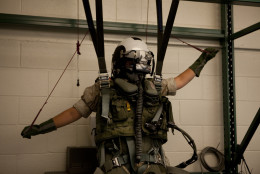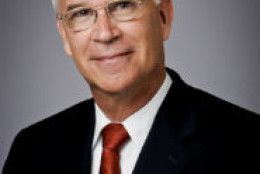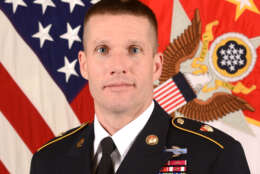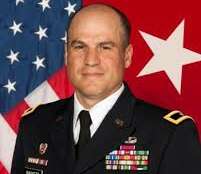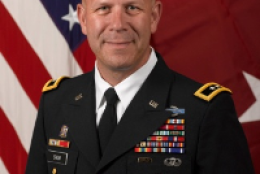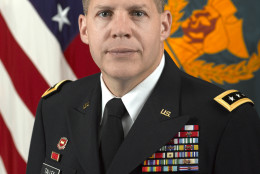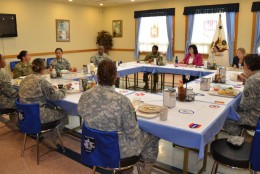Army
-
The Army launches a pilot program Oct. 19 to ensure non-commissioned officers are ready for the next stage of their careers.
October 15, 2015 -
The Army is using simulations and virtual trainers to prepare its soldiers for everything from driving vehicles to shooting high-powered weapons, but at least one provider warns that it's time the Army rebooted its tools.
October 15, 2015 -
The Army's top acquisition official said government needs to work with industry to stop duplicative testing that is delaying the time it takes for troops to get products.
October 14, 2015 -
On this week’s edition of On DoD: An update on the Army’s Network Integration Evaluation. The NIE process for testing and integrating new technology into the Army’s inventory is several years old now, but it’s undergoing…
October 14, 2015 -
Whether learning to fly an attack helicopter or maneuver a ground combat vehicle, pretty much everything the Army does requires intensive training. Because of the expense and danger involved, it's using simulation technology for a growing number of training categories. Raytheon is a major supplier of simulation-based training. At the Association of the U.S. Army conference, Federal Drive host Tom Temin spoke to Bob Williams, Raytheon's vice president of training solutions.
October 14, 2015 -
Good soldiers are basic to a strong Army, and education is crucial to making good soldiers. That's why the Army spends so much time and money on education. Now the Army is embarking on an expansion of its schooling capabilities. Federal Drive host Tom Temin spoke with Sgt. Maj. of the Army Dan Dailey at the AUSA conference. He asked him if that's what attracts people to the Army in the first place.
October 14, 2015 -
In one corner of the Army, the story of a drive to improve the kill power of a proven platform.
October 14, 2015 -
Although formal combat operations are over, the Army is hanging onto the rapid acquisition team it built for Iraq and Afghanistan
October 14, 2015 -
Federal Drive with Tom Temin broadcast live from the 2015 Association of the United States Army conference and exposition, interviewing Army officials about the challenges the service is facing.
October 13, 2015 -
As the saying goes, nothing happens until somebody buys something. The Army spends tens of billions of dollars a year on everything from uniforms to combat vehicles. How it goes about acquisition, and moving all that material around the world, has a big impact on its effectiveness and readiness. Lt. Gen. Michael Williamson is the military deputy to the Assistant Secretary of the Army for Acquisition, Logistics and Technology. He joins Federal Drive host Tom Temin at the Association of the U.S. Army convention in Washington.
October 13, 2015 -
As the Army becomes more flexible and agile, commanders are considering mobility. That is, the vehicles necessary to take small, lethal units from one place to another, often under harsh, dangerous conditions. Brig. Gen. David Bassett is the program executive for the Army’s Ground Combat Systems. He joins Federal Drive host Tom Temin at the Association of the U.S. Army convention in Washington.
October 13, 2015 -
Presidents, members of Congress, veterans and many others call it the finest fighting force in the world. But the Army doesn’t stay that way by accident. Recruiting is a constant challenge, particularly as society and culture change. Maj. Gen. Jeffrey Snow is commander of the Army Recruiting Command. He joins Federal Drive host Tom Temin at the Association of the U.S. Army convention in Washington.
October 13, 2015 -
In recent years, the Army Reserve has provided important sustainment to the long ground wars in Iraq and Afghanistan and many other Army missions. Now the Reserve is focused on what’s ahead. Lt. Gen. Jeffrey Talley, commander of the Army Reserve, spoke to Federal Drive with Tom Temin, which broadcast live from the Association of the U.S. Army convention in Washington.
October 13, 2015 -
The Department of the Navy is taking the lead in the military by allowing personnel to wear fitness devices such as a Fitbit or Nike Fuel Band. Naval officials said they want to promote a "culture of fitness" while preserving a secure and classified environment.
October 09, 2015 -
The Army has released its new Energy Security and Sustainability Strategy, designed to enhance the force's readiness, capabilities, and performance. The strategy includes five goals. Katherine Hammack, assistant secretary of the Army for Installations, Energy, and Environment, was my guest to review each of the five goals, and explain how the Army will meet them.
October 06, 2015


